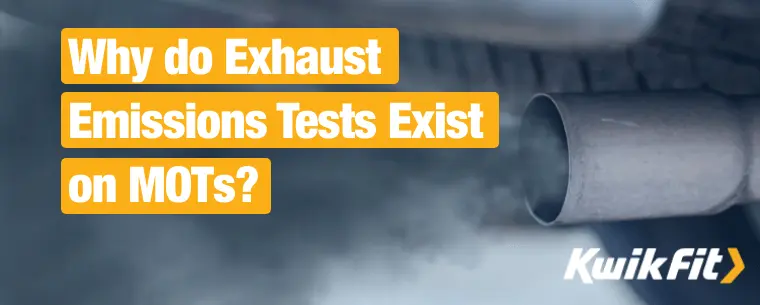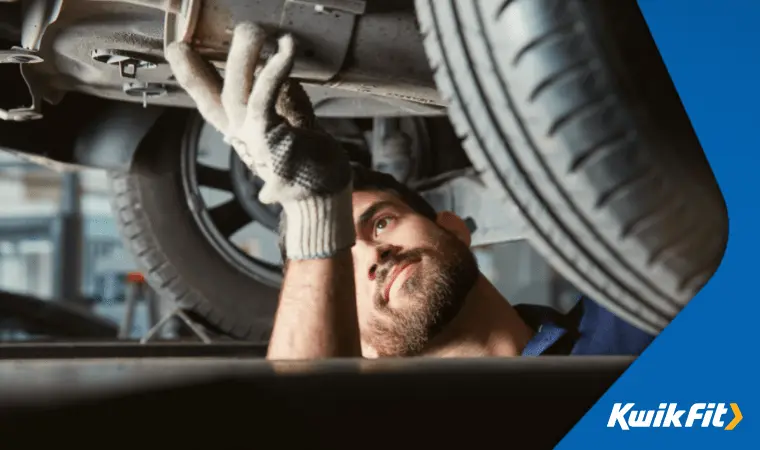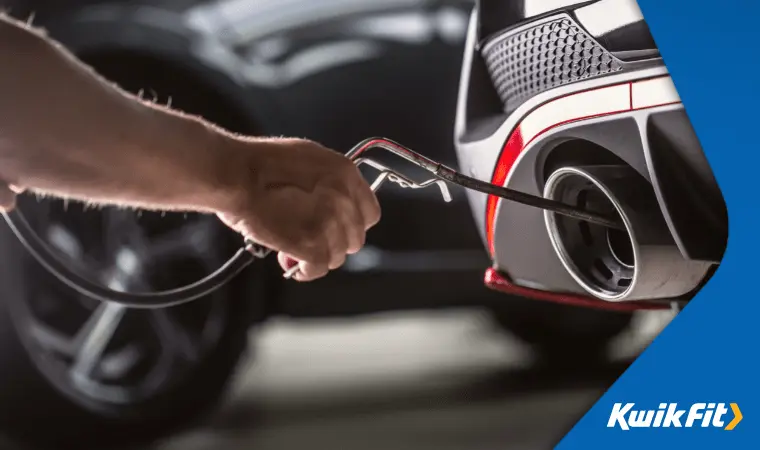Why do Exhaust Emissions Tests Exist on MOTs?
Jack Dreyer | Monday 7th August 2023 9:00am

If youíve had an MOT in the past five years, youíll have come across the exhaust emissions test. Designed to test whether the gases emitted from a carís exhaust are below the levels stipulated by both national and European legislation; legally, you cannot get an MOT certificate if your vehicleís exhaust emissions are too high.
Every testing station or garage that offers MOTs is required to test a carís exhaust emissions ó at least for every domestic vehicle over three years old. As well as this, though, your vehicleís exhaust emissions can also be tested roadside.
But why was this test added to the MOT assessment in the first place? Read on to find out.
The exhaust emissions test explained
Which vehicles donít need emissions testing?
Any petrol vehicle used before August 1975 ó or diesel vehicle used before January 1980 ó arenít subject to an emissions test via the usual meter method. Instead, these vehicles are tested by sight, looking at what comes out of the exhaust.
All other vehicles, apart from the following, will be required to pass an emissions test if they want to pass their MOT:
- Vehicles with less than four wheels
- Vehicles with 2-stroke engines
- Electric vehicles
- Hybrid vehicles
How does the exhaust emissions test work?
Simply put, the exhaust emissions test is an assessment in which specialist equipment is used to measure the gases a carís exhaust produces and compare them to guidelines. Usually, the following steps take place:
- You book your vehicle in for an MOT at your local Kwik Fit or MOT testing centre.
- The MOT begins and, once the exhaust testing section starts, a probe (also known as an exhaust gas analyser) is placed in the tailpipe of your vehicle.
- This instrument should be approved by a nationally-recognized body and calibrated using a CRS (Certified Reference Standard) produced in accordance with ISO17025.
- The vehicle is turned on and four core exhaust gases are measured:
- Oxygen (O2)
- Carbon Monoxide (CO)
- Carbon Dioxide (CO2)
- Hydrocarbons (HC)
- As well as these gases, a metric known as ďlambaĒ (?) is calculated. This is a measure of the air-to-fuel ratio in the gas.
- As a result, an overall value of the efficiency of the engine is given.
Increasingly for drivers, an MOT is now not the only place they will encounter an emissions test. Some boroughs and local constituencies are ĎAir Quality Management Areasí which means that the council can test vehicles for their emissions at the roadside ó even issuing fixed penalties to drivers whose vehicles fail. So, it is essential to stay vigilant with your carís emissions.

Why do exhaust emissions tests exist?
Over the past ten years, the UK government has moved closer and closer to their goal of achieving Net Zero Emissions by 2050 owing to a clearly-laid out Carbon Reduction Policy. A huge part of meeting this target has been directly to do with reducing the amount of greenhouse gases (GHGs) produced by transport on Britainís roads. Why? Because, in 2016, transport rose to be the largest emitting sector in Britainís excessive greenhouse gas emissions and these gases directly contribute to global warming, a phenomenon currently wreaking havoc on our planet in the form of climate change.
So, what are the current carbon emissions produced by the vehicles on Britainís roads?
Carbon emissions and our cars
According to the Department for Energy Security and Net Zero, in 2020, the UK produced 406 MtCO2e (thatís million tonnes of CO2 equivalent) of greenhouse gas emissions. Of this figure, UK transport was responsible for 99 MtCO2e (thatís a whopping 24% of emissions).
The majority of these emissions (91%) came from road vehicles, more specifically, cars and taxis which produced 89 MtCO2e in this year.
Air pollution
Alongside CO2, the exhausts on our cars also produce gases and other substances that, although having a less significant greenhouse gas effect, can have significant health consequences.
Namely, these take the form of Nitrogen Oxides (NOX) and particulate matter (PM). According to the National Atmospheric Emissions Inventory (or NAEI), a third of the nitrogen oxides and 14% of particulate matter produced by the UK came from the transport sector in 2020.
Cracking down on exhaust emissions
So, when taking the statistics about greenhouse gases and air pollution above into consideration, itís easy to see why the transport sector has come under so much scrutiny from the government with its laws and reforms.
- The exhaust emissions testing in MOTs is just one of these reforms alongside:
- The encouragement of UK citizens to use public transport or bicycles
- The promotion of hybrid and electric vehicles with schemes and grants
- The law stating all newbuild areas must have EV chargers
- New rules for EV charging points
- The introduction and expansion of Low and Ultra Low Emissions Zones into major cities
- The introduction of Clean Air Financial Support Schemes in major cities with ULEZ regulations helps drivers upgrade their vehicles.
- And more.
And itís working! In recent years, since the introduction of the emissions test (alongside other measures), there have been significant reductions in NOX levels as drivers are forced to take greater responsibility and accountability for the cleanliness of their vehicles by doing things like exhaust checks.

Time for your MOT?
If your car is due its MOT soon, be sure to book in for a service and MOT appointment at Kwik Fit. Or, if youíre not sure when your MOT is, nowís a great time to sign up to our reminder service.
And, if you have any more questions about exhaust emissions or any of your carís accessories, get in touch with your local Kwik Fit today.
Any facts, figures and prices shown in our blog articles are correct at time of publication.
Featured Articles
Is it Illegal to Drive With One Headlight?
Saturday 19th July 2025
Wondering if itís illegal to drive with one headlight? Learn about the safety risks and penalties of illegal blown bulbs and why you should fix them promptly.
Air Con in EVs & Hybrids: Experts Answer Your Questions
Monday 30th June 2025
Does air con drain EV batteries? Can you use the air con while charging an electric car? Find out the answers to these questions & more from Kwik Fitís experts.
Why Is Your Car Making a Noise? Fixes & Tips
Friday 13th June 2025
When your car starts making unexpected noises, it can certainly be quite disconcerting; it may be nothing to worry about, but hereís what you need to know.









